|
Third graders showed off their sound technologies by demonstrating how they worked in front of their fellow acoustical engineers. They had to make sure they showcased how they met the criteria of the challenge--that their sound technologies could change in both pitch and volume. Way to go third graders...I mean acoustical engineers! With their plans approved, third graders are building their sound technologies, making sure they change in both pitch and volume as was required by the criteria of the challenge. Check out their amazing work...we'll be able to test them in front of a crowd soon to see if they meet the goal of the challenge...to get people's attention in the sometimes noisy cafeteria!
Our school's cafeteria can get a bit noisy at times. In fact, it can be a problem when a class needs to follow the directions of the adults in charge, yet they can't hear them. As a result, third graders have decided to help solve this problem. What better way to get everyone's attention than with a sound technology!
Using everyday materials, third graders will be designing and creating a technology that can change in both pitch and volume. We agreed that the pitch should change so that it can be heard over the different levels of pitch in the cafeteria (meaning the voices of Kindergartners have a different pitch than our fifth graders)! And it should absolutely change in volume in case the volume of the cafeteria changes, too. Our first focus as engineers is always asking good questions, and third graders have reviewed how we can change both the pitch and the volume of various technologies. Third graders have moved on to brainstorming their technology designs and will then plan out their designs with a partner! Check back soon to see how some of their plans come into action! Will they be able to change both in pitch and in volume? Will they also be able to get everyone's attention in the noisy cafeteria? 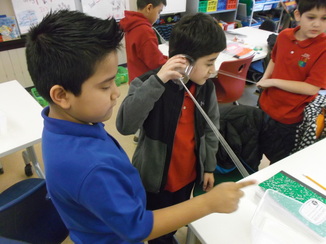 Third graders have had experiences changing the length of a sound source, making observations about how length and pitch are connected. Our next steps...seeing how tension affects pitch! Tension is a force that pulls an object in opposite directions. Using stringed instruments as a focus, third graders are changing the tension in the string to see what happens to the pitch. Does making the string more tense make the pitch higher or lower? What if we reduce the tension? 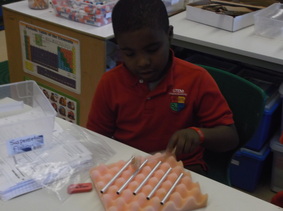 Our next focus regarding sound is exploring pitch! Pitch is caused by the frequency of vibrations. A high frequency of vibrations means the vibrations are traveling quickly in a specific time frame. Therefore, we hear a high-pitched note. A low frequency means the vibrations are traveling slower and travel less frequently within a time frame. Therefore, we hear a lower-pitched note. Third graders are exploring this relationship with sound sources of differing lengths. They are using waterphones, xylophones, kalimbas, and sting beams. They are starting to see patterns between the length of the sound sources and the pitches they hear! Keep up the great work third grade! Knowing that sound is caused by vibrations, third graders are exploring various properties of sound. Our first focus will be on volume. How do the vibrations change when the volume gets louder? Softer? We've introduced two new technologies to help us see the differences in volume--a tone generator (with beans on top) and a door fiddle (made of string).
Sounds are all around us, but what causes them? Third graders continue to explore sound, looking for evidence of vibrations. Can you feel the vibrations when you hear a sound? Can you see the vibrations when you hear a sound? Since sound comes from many different sources, third graders are looking for ways in which they can see or feel the vibrations of sound!
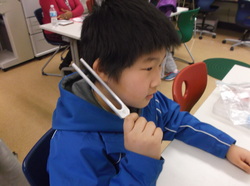 While it has been easy to discriminate sounds, third graders are now trying to uncover what actually causes sound. With a few "instruments," third graders are gathering evidence for what causes sound and also what causes the sounds to be so different from each other! Did they see something happen when the struck the tuning fork? Did they feel something? What about with the long gong made of string, a cup, and a metal hanger? Did they see or feel something when they heard the pencil strike the hanger? 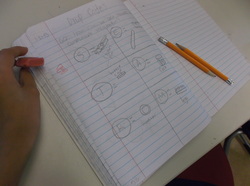 Every sound we hear can be discriminated against another sound. For example, the sound a washer makes sounds quite differently than the sound a popsicle stick makes. Knowing that sound can be used to communicate, third graders are using sound to "tell" a code. Using their drop chambers and some everyday objects, they are trying to have their friends guess their secret message. Their sound code is one example of a code. We discussed how braille, sign language, and music are special codes, too! How can you tell sounds apart from one another? Do they all sound the same? Or are you able to hear the differences?
Acoustical engineers must be able to discriminate sounds apart from one another, especially as we want to be able to hear specific sounds and not others. Third graders began their sound unit trying to discriminate sounds playing the Drop Challenge! They had to try to match the sounds their friends made from dropping everyday objects. For example, when you drop an eraser and a washer, they make very distinguishable sounds! |
Mrs. BrinzaWhat sounds have you heard today? Archives
April 2014
Useful Links
|
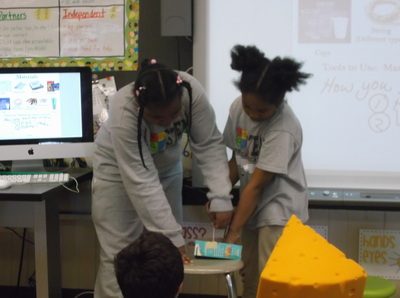
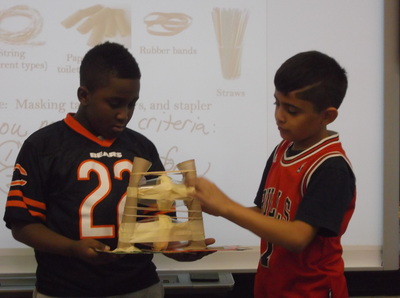
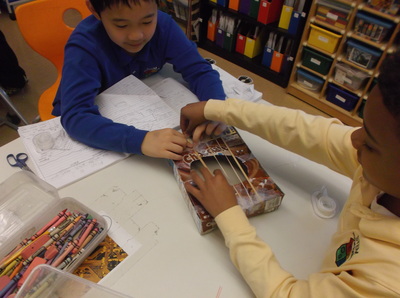
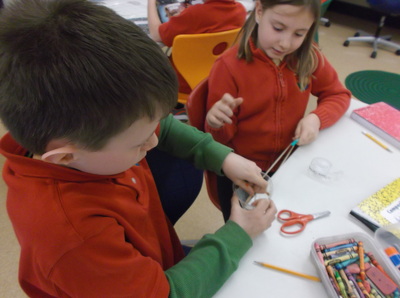
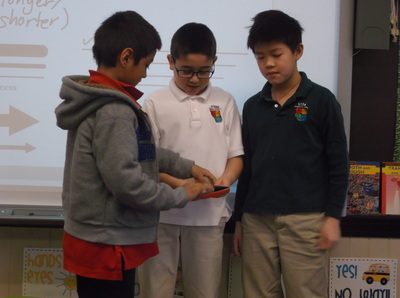
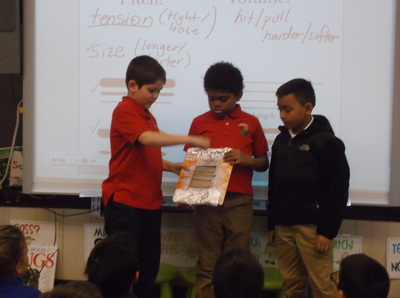
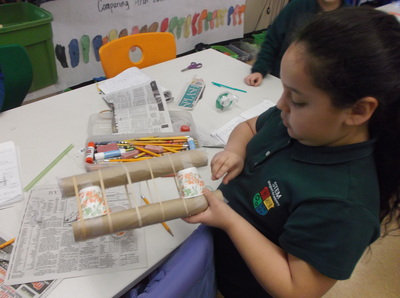
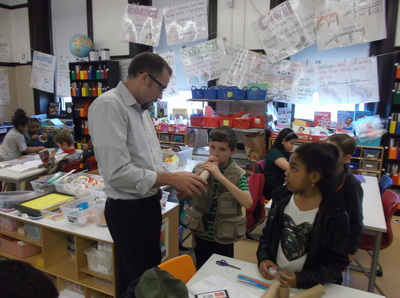
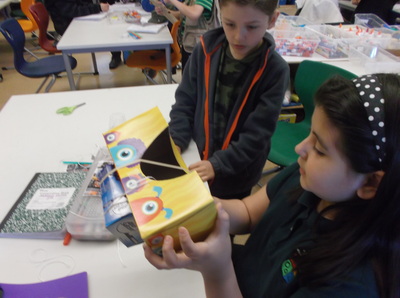
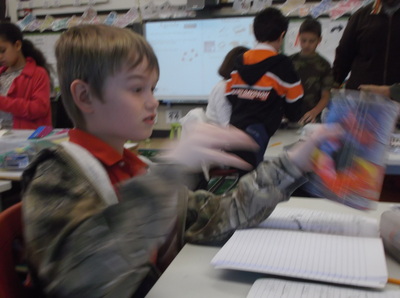
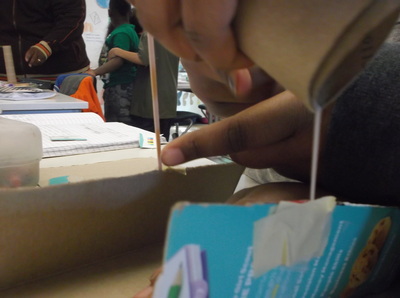
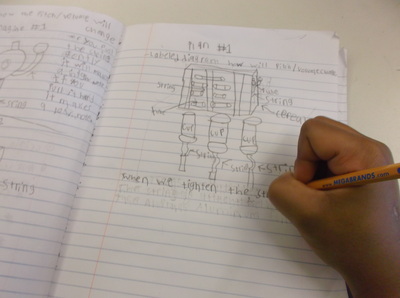
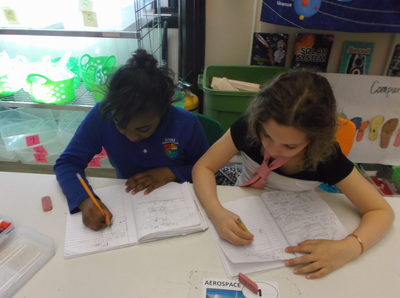
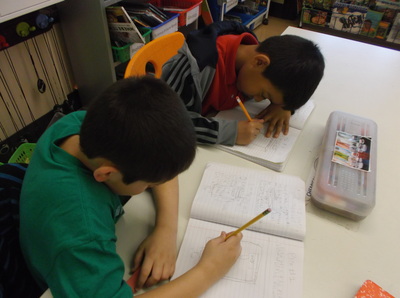
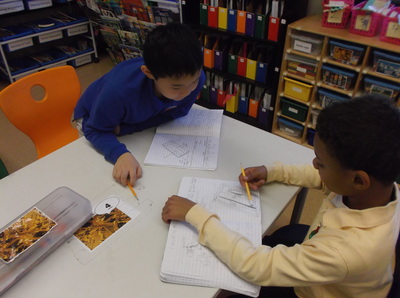
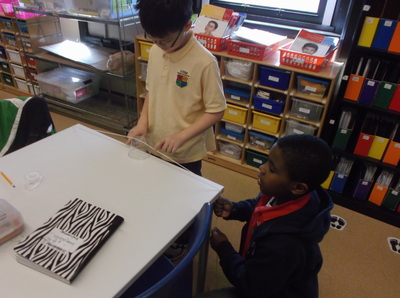
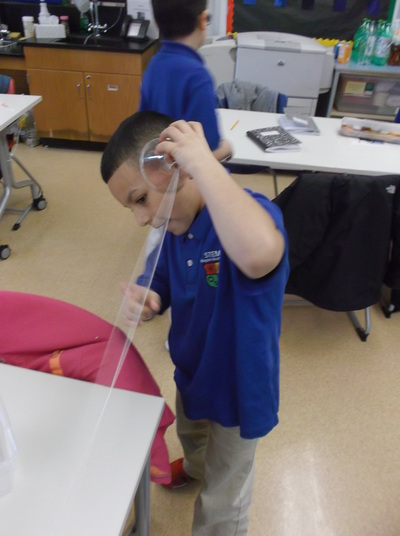
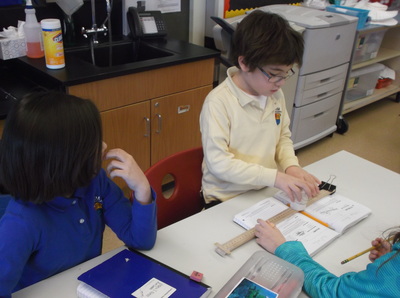
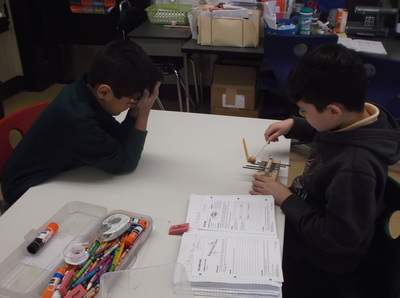
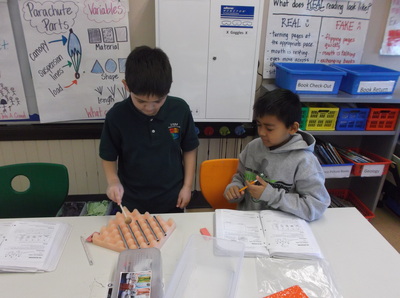
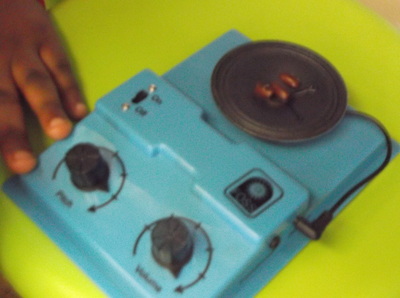
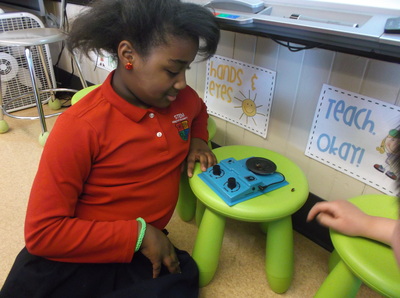
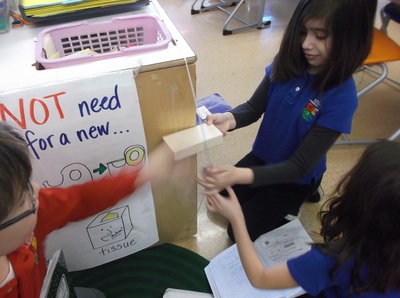
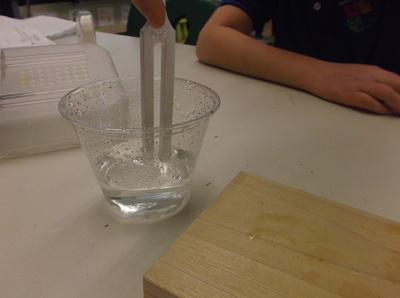
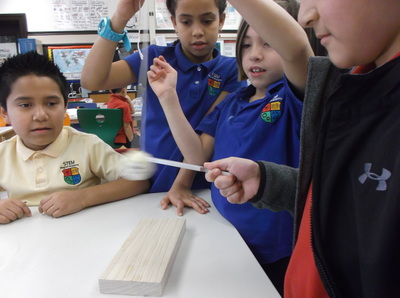
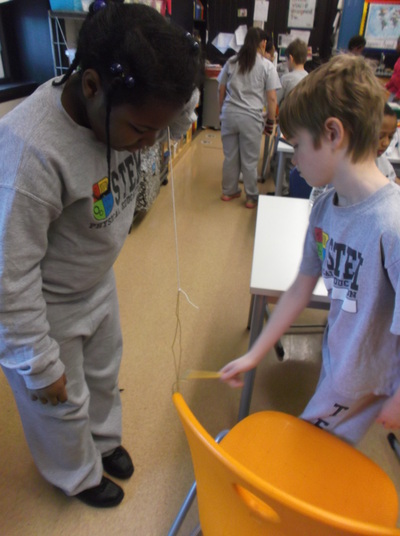
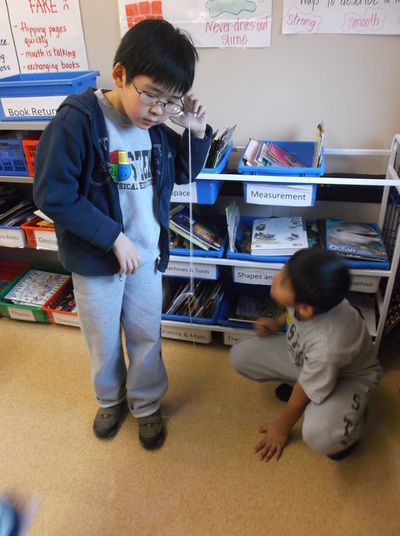
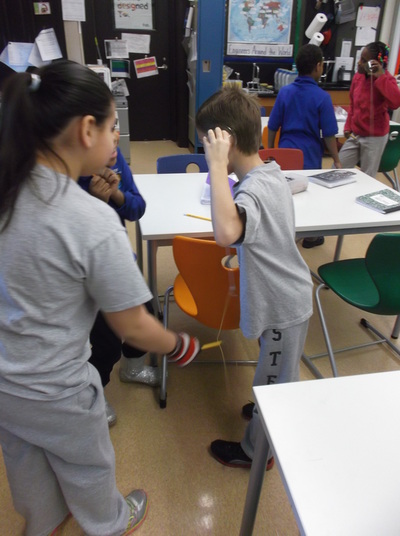
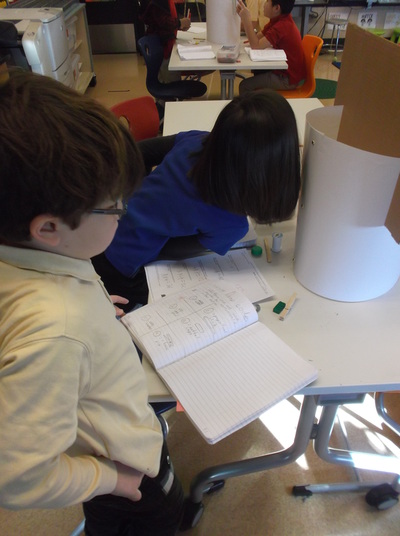
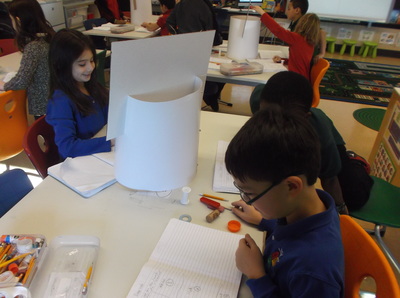
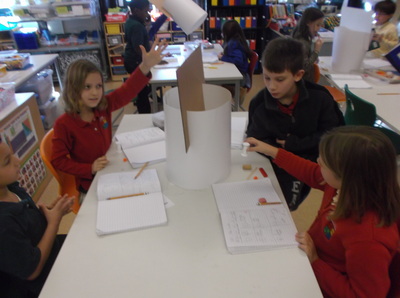
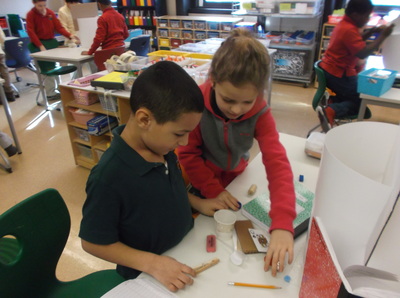
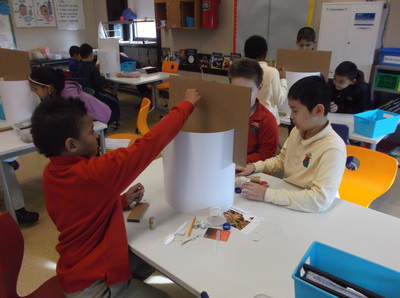
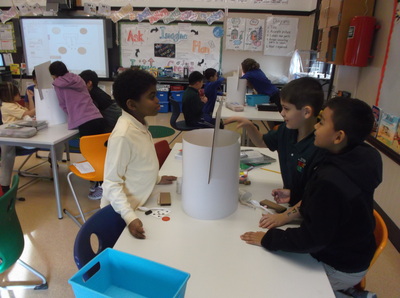
 RSS Feed
RSS Feed